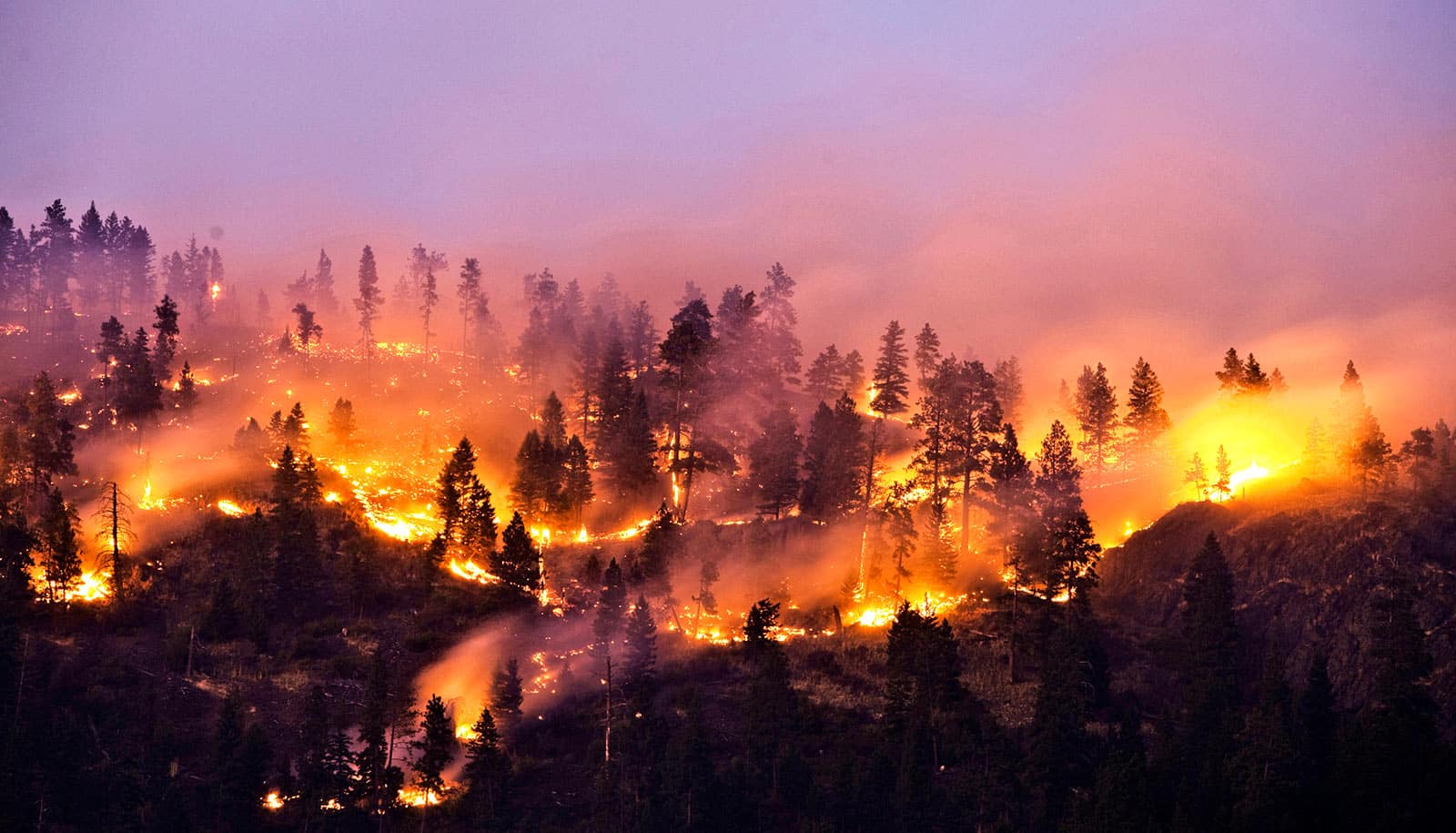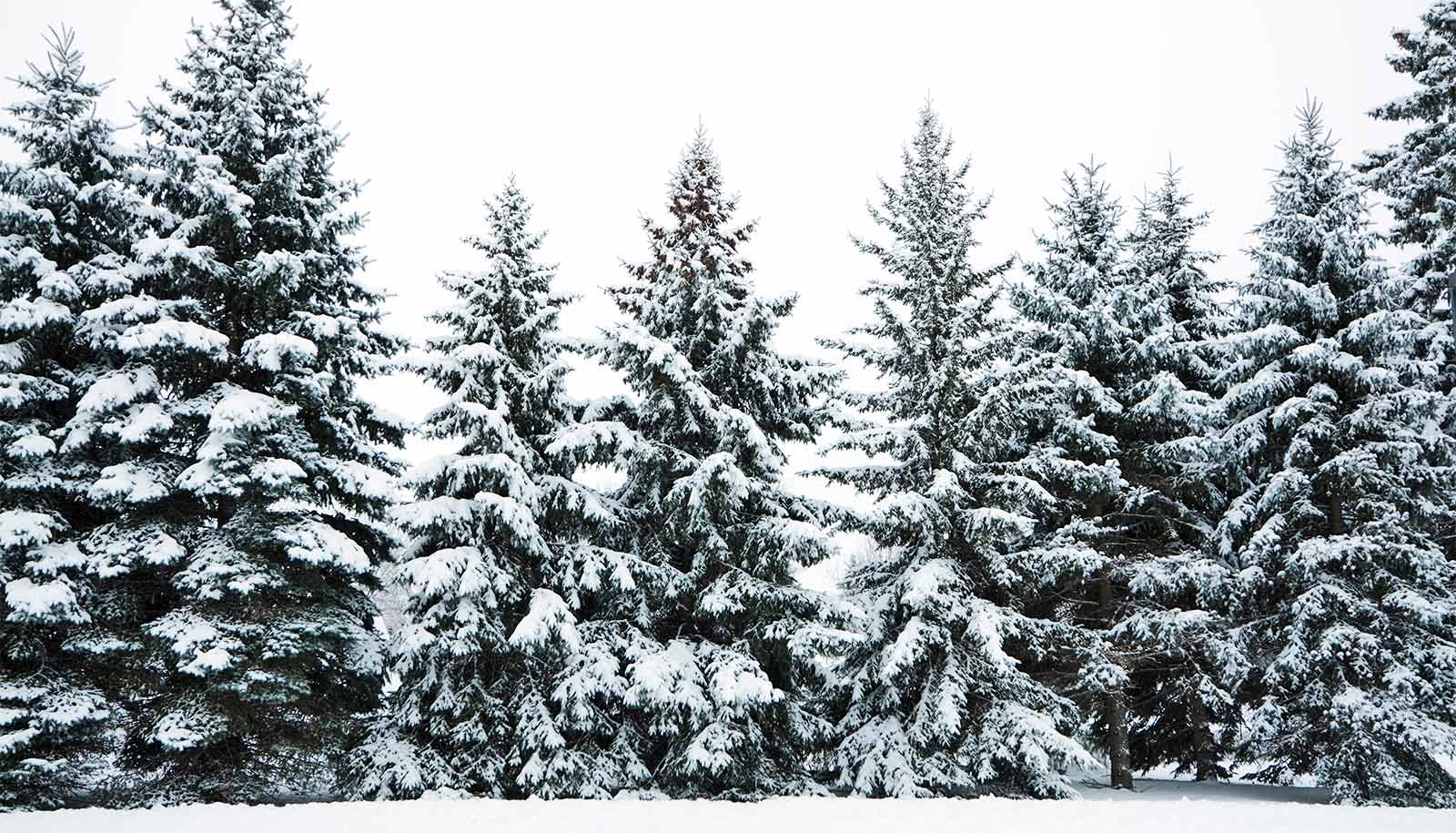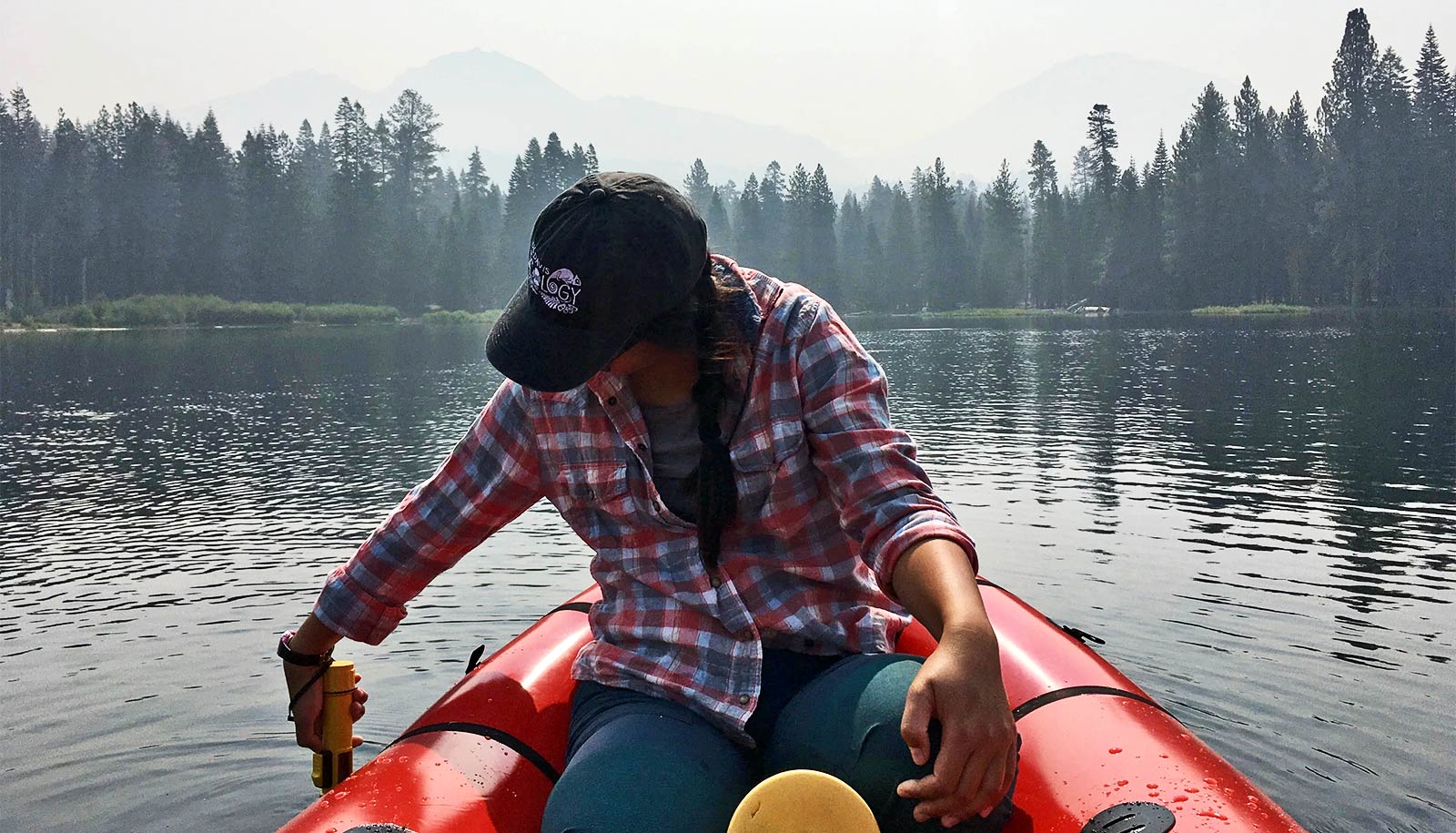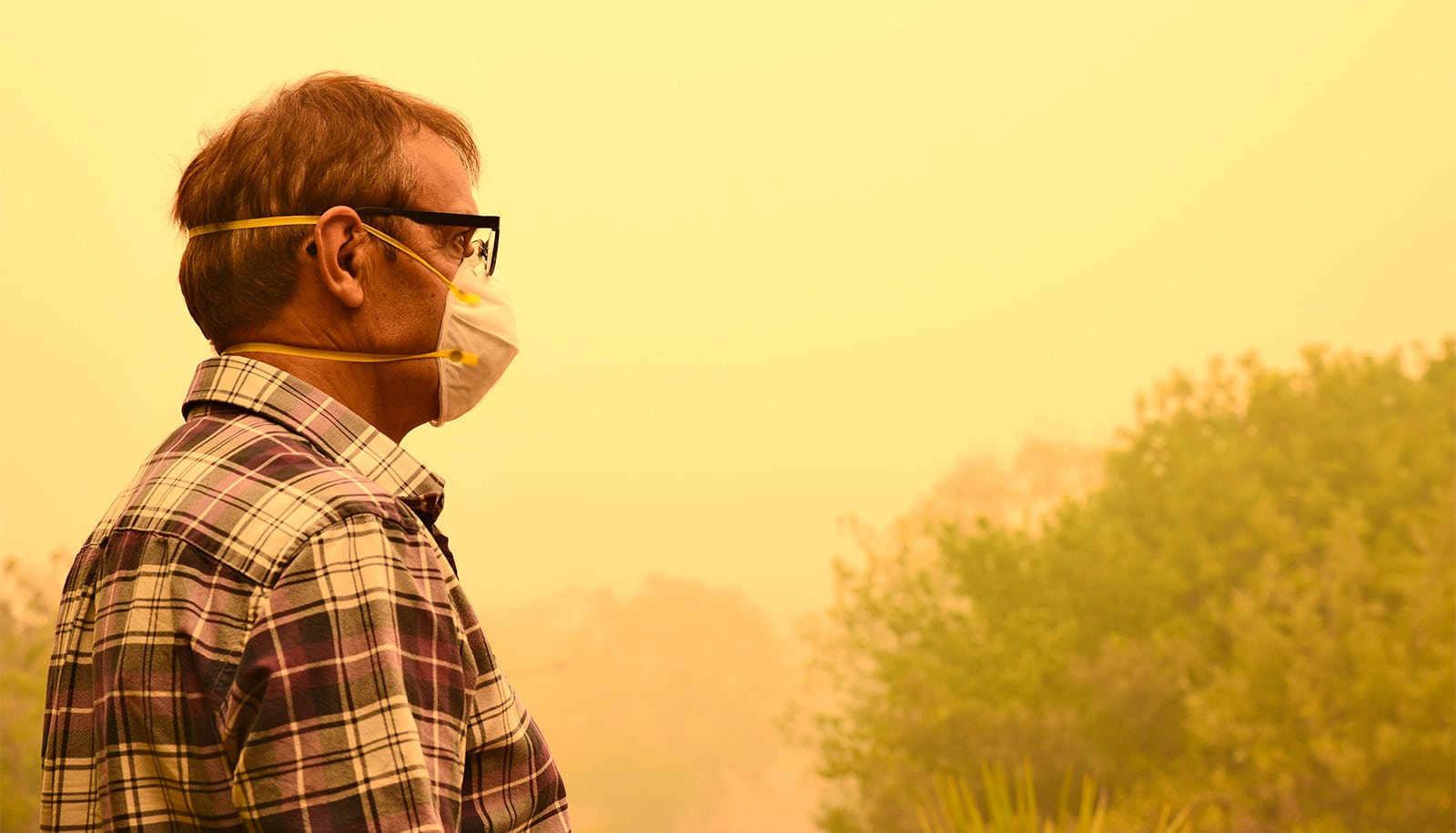Light-absorbing organic particulate matter, also known as brown carbon aerosol, in wildfire smoke loses its ability to absorb sunlight the longer it remains in the atmosphere, new research suggests.
“Our study casts doubts on the warming implications of brown carbon…”
Brown carbon aerosol changes its properties from light-absorbing to light-scattering the longer it remains in the atmosphere, find Rajan Chakrabarty and Brent Williams, both assistant professors and aerosol scientists in the energy, environmental, and chemical engineering department of the School of Engineering & Applied Science at Washington University in St. Louis.
When it is first emitted, the smoke is brown and has a warming effect on the atmosphere. But over several days in the atmosphere, the smoke gradually turns white and has a significantly reduced warming effect. The resulting white smoke roughly contributes to roughly a 46 percent reduction in light absorption compared with the brown smoke.
“Our study casts doubts on the warming implications of brown carbon,” Chakrabarty says. “If this life cycle analysis is not taken into account, climate models could very well give rise to overestimated values of warming due to these aerosols.”
While scientists already identified black carbon, or soot, as the major light-absorbing and warming agent, less is known about the effects of brown carbon from smoldering wildfires on the atmosphere. There are a lot of uncertainties regarding the role of these aerosols in enhancing atmospheric warming, the researchers say.
Chakrabarty, Williams, and their lab members made the discovery by burning peatland fuels, acquired from different regions of Alaska with the help of the US Forest Service, in their combustion chamber. Smoldering peat fires in the Boreal forests are a major source of organic aerosol and carbon emissions.
In a unique simulated environment, the team studied the changes in the physics, chemistry, optical properties, and composition of the brown carbon smoke over several days. By exposing the smoke plumes to ultraviolet radiation and oxidants, such as ozone, in a photochemical reactor, they could mimic the natural effects in the atmosphere.
When the smoke was first emitted from the burns, it was a muddy brown from the way it absorbed the shorter visible wavelengths (blue to green).
Sooty specks from wildfires raise air pollution
“We saw that as the smoke ages in our simulated atmosphere, we are increasing the extent to which the chemical changes can happen,” says Williams, director of the Washington University Climate Change Program. “As this chemistry occurs in the atmosphere, the smoke particles become a lighter color as the days go on. If the particles always stayed brown, they would continue to contribute to warming because they absorb more radiation. If after a few days in the atmosphere they turn white, they’ll start contributing to cooling by scattering more radiation.”
Chakrabarty says the results will be beneficial to scientists for fine-tuning climate models and satellite retrieval algorithms. It also will assist several federal agencies working to understand wildfires.
“Wildfires are going to be the major source of air pollution because of decades of fire suppression and increased fuel loads,” Chakrabarty says. “We have exerted control to a certain extent on regular emissions, such as those from vehicles and industries, but this is nature, and it’s very hard to control.”
Williams says the longtime land management in the West and warming in the northern part of the country has led to an increase of combustible fuels as climate change has become more prevalent.
“Events such as droughts, floods, and invasive pests can all kill your vegetation, so you have standing, dead vegetation with a whole forest floor full of fuel ready to go,” Williams says. “All of our models predict that these fires are going to get more extreme. In addition to the climate implications that were a focus of this study, air quality management districts are also very concerned about the health consequences for communities that will have poorer air quality because of these forest fires.”
How climate affects the frequency of wildfires
The researchers report their results in Environmental Science & Technology Letters.
The National Science Foundation; National Aeronautics & Space Administration; and the International Center for Energy, Environment and Sustainability at Washington University in St. Louis provided funding for this research.



